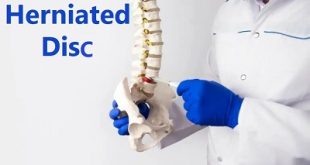Definition
Syringomyelia is the disorder in which a cyst or cavity forms within the spinal cord. This cyst, called a syrinx, can expand and elongate over time, destroying the spinal cord. The damage may result in pain, paralysis, weakness and stiffness in the back, shoulders, and extremities. Syringomyelia may also cause a loss of the ability to feel extremes of hot or cold, especially in the hands. The disorder generally leads to a cape-like loss of pain and temperature sensation along the back and arms.
A syrinx can develop at any time, but it is most commonly diagnosed in young adults. In some individuals, the syrinx does not cause any symptoms and does not progress; in others the syrinx causes neurological symptoms and continues to progress. As a syrinx grows, the nerve fibers inside the spinal cord are compressed and stretched and a wide variety of symptoms can occur, depending upon the size and location of the syrinx. As it stretches it may damage the gray matter in the spinal cord and cause pain, loss of sensation, and loss of muscle bulk. Damage to the white matter causes stiffness and poor muscle control. Left untreated, a syrinx may eventually lead to paralysis.
Epidemiology
Estimated prevalence of the disease is about 8.4 cases per 100,000 people and occurs more frequently in men than in women. The disease usually appears in the third or fourth decade of life, with a mean age of onset of 30 years. Rarely, syringomyelia may develop in childhood or late adulthood.
Types of Syringomyelia
The brain and spinal cord (central nervous system) are surrounded by a clear fluid known as cerebrospinal fluid. Some of the functions of cerebrospinal fluid include nourishing and cushioning the central nervous system.
The three broad categories of syringomyelia include:
Congenital brain defects – Such as Arnold-Chiari malformation. The bottom part of the brain (cerebellum) lies in the upper part of the neck, instead of within the skull. This obstructs the flow of cerebrospinal fluid. It may be associated with hydrocephalus.
Injury to the spinal cord – Including trauma, tumours and infections (such as meningitis, HIV), and where there is severe cord compression.
Idiopathic syringomyelia – The cause is unknown.
Syringomyelia risk factors
Syringomyelia can be caused by another medical condition such as a tethered spinal cord, a Chiari malformation, or a spinal cord tumor.
Syringomyelia can also be caused by damage to a previously healthy spinal cord. This damage can be caused by trauma, meningitis (an infection in the spinal cord membranes), arachnoiditis (inflammation and scarring of the spinal cord membranes), hemorrhage (bleeding), or other problems.
Causes of Syringomyelia
It’s unclear how and why syringomyelia happens. When it develops, cerebrospinal fluid- the fluid that surrounds, cushions and protects your brain and spinal cord- collects within the spinal cord itself, forming a fluid-filled cyst (syrinx).
Pictorial representation of the syrinx wall and fluid movement during the cardiac cycle
Several conditions and diseases can lead to syringomyelia, including:
- Chiari malformation, a condition in which brain tissue protrudes into your spinal canal
- Meningitis, an inflammation of the membranes surrounding your brain and spinal cord
- Spinal cord tumor, which can interfere with the normal circulation of cerebrospinal fluid
- Conditions present at birth, such as a tethered spinal cord, a condition caused when tissue attached to your spinal cord limits its movement
- Spinal cord injury, which can cause symptoms months or years later
Syringomyelia symptoms
The symptoms of syringomyelia are very variable, and often progress slowly over years. Classic findings include:
- Scoliosis
- Sensory loss in a “cape” distribution (over the tops of the shoulders); loss of pain and temperature sensation without loss of touch and position sense
- Neck pain and pain in the back of the head
- Pain in legs and arms, and hands and feet
- Hand and arm weakness and loss of muscle function
- High muscle tone in the arms and legs (spasticity)
- Sleep apnea
Syringomyelia is diagnosed with MRI. Small syrinxes or hydromyelia in the spinal cord can be a normal finding.
Complications of Syringomyelia
In some people, syringomyelia can progress and lead to serious complications. Others have no symptoms.
Possible complications as a syrinx enlarges or if it damages nerves within your spinal cord include:
- An abnormal curve of your spine (scoliosis)
- Chronic pain as a result of spinal cord damage to the spinal cord
- Motor difficulties, such as weakness and stiffness in your leg muscles that can affect your walking
- Paralysis
Diagnosis and test
Magnetic Resonance Imaging (MRI) is currently the diagnostic test of choice for syringomyelia.
Myelography Enhanced Computed Tomography (CT-myelography). A significant improvement over plain CT, as it is able to show swelling and fixation of the cord and localized CSF flow obstruction.
Virtual Endocopy (VE) by Computer Tomography allows non-invasive exploration of the spinal canal in all directions and can provide information regarding the extent of stenosis, which plain CT cannot provide. Ultrasonography is useful in localizing syrinxes, determining the safest place to open the dura, and facilitating optimal shunt placement during surgery.
Intraoperative Somatosensory Evoked Potentials have limited value in assessing for syringomyelia, however may be used during surgery to prevent neurological damage.
Treatment and medications
Treatment for syringomyelia depends on the severity and progression of symptoms.
Monitoring
Syringomyelia that doesn’t show symptoms is usually not treated but the person should be carefully monitored by a neurologist or neurosurgeon as symptoms can worsen over time. A physician may recommend not treating the condition in individuals of advanced age or in cases where there is no progression of symptoms. Individuals with syringomyelia should avoid activities that involve straining (e.g., lifting heavy objects, jumping) since these actions can trigger symptoms. People with an associated Chiari malformation are especially apt to experience headache with straining.
Surgery
If syringomyelia is causing signs and symptoms that interfere with your life, or if signs and symptoms rapidly worsen, your doctor will likely recommend surgery.
The goal of surgery is to remove the pressure the syrinx places on your spinal cord and to restore the normal flow of cerebrospinal fluid. This can help improve your symptoms and nervous system function. The type of surgery you’ll need depends on the cause of syringomyelia.
To reduce pressure on your brain and spinal cord, surgery options include:
Treating Chiari malformation: If syringomyelia is caused by Chiari malformation, surgery might involve removing a small section of bone at the back of your skull. This surgery can reduce pressure on your brain and spinal cord, restore the normal flow of cerebrospinal fluid, and might improve or resolve syringomyelia.
Draining the syrinx: Your doctor will surgically insert a drainage system, called a shunt. It consists of a flexible tube that keeps fluid from the syrinx flowing in the desired direction. One end of the tubing is placed in the syrinx, and the other is placed in another area of your body such as your abdomen.
Removing the obstruction: If something within your spinal cord, such as a tumor or a bony growth, is hindering the flow of cerebrospinal fluid, surgically removing the obstruction might restore the flow and allow fluid to drain from the syrinx.
Correcting the abnormality: If a spinal abnormality is hindering the flow of cerebrospinal fluid, surgery to correct it, such as releasing a tethered spinal cord, might restore fluid flow and allow the syrinx to drain.
Surgery doesn’t always restore the flow of cerebrospinal fluid, and the syrinx might remain, despite efforts to drain the fluid from it.
Syringomyelia prevention
There is no known way to prevent this condition, other than avoiding injuries to the spinal cord. Getting treated right away slows the disorder from getting worse.
 Diseases Treatments Dictionary This is complete solution to read all diseases treatments Which covers Prevention, Causes, Symptoms, Medical Terms, Drugs, Prescription, Natural Remedies with cures and Treatments. Most of the common diseases were listed in names, split with categories.
Diseases Treatments Dictionary This is complete solution to read all diseases treatments Which covers Prevention, Causes, Symptoms, Medical Terms, Drugs, Prescription, Natural Remedies with cures and Treatments. Most of the common diseases were listed in names, split with categories.







